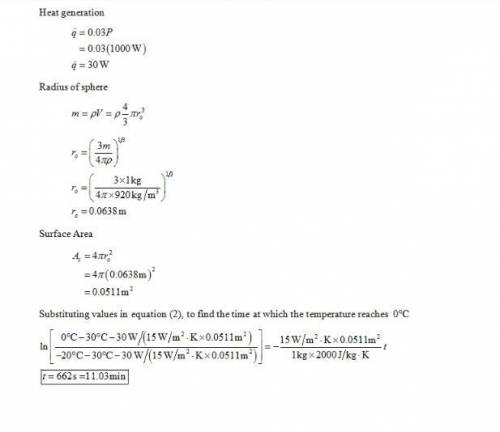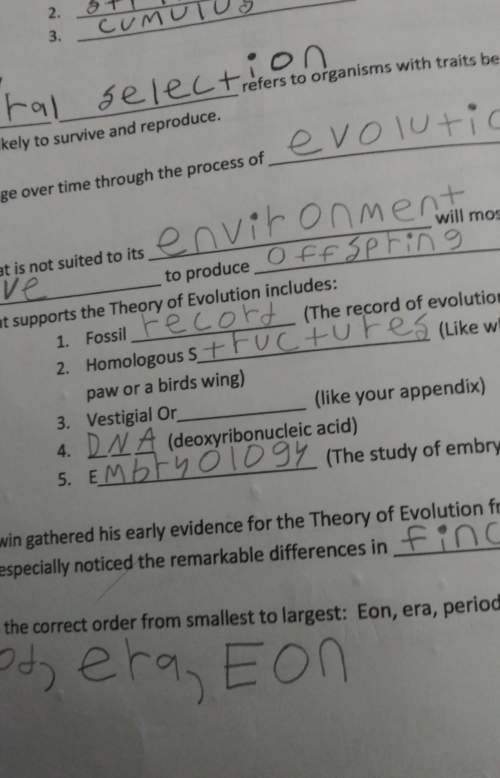
A microwave oven operates on the principle that application of a high-frequency field causes electrically polarized molecules such as water within the food to oscillate. Rapid alignment and reversal of water molecules results in a nearly uniform generation of thermal energy within the food and, in turn, cooking of the food. When the food is initially frozen, however, the water molecules do not readily oscillate in response to the microwaves, and the volumetric heat generation rates are between one and two orders of magnitude lower than if the water were in liquid form. Microwave power that is not absorbed in the food is reflected back to the microwave generator, where it is dissipated in the form of heat to prevent damage to the generator.
a. Consider a frozen, 1-kg spherical piece of ground beef at an initial temperature of -20 degrees C placed in a microwave oven with total power of 1 kW, air temperature of 30 degrees C, and heat transfer coefficient of 15 W/m^2*K. Assuming the temperature within the beef to be uniform, determine how long it would take the beef to reach a temperature of 0 degrees C, with all the water in the form of ice and 3% of the oven power absorbed by the food. You may assume the physical properties of the beef to be the same as those of ice (p = 920 kg/m^3; c = 2,000 J/kg*K; k = 2.2 W/m*K) in this case.
b. After all the ice is converted to liquid, determine how long it would take to heat the beef to a uniform temperature of 80 degrees C if the temperature within the beef is still assumed to be uniform and 95% of the oven power is absorbed in the food. Assume the properties of the beef are now the same as those of liquid water (p = 1,000 kg/m^3; c = 4,200 J/kg*K; k = 0.6 W/m*K).
c. When thawing food in microwave ovens, you may observe that part of the food is still frozen while other parts of the food are overcooked. Can you explain why this occurs? Explain why most microwave ovens have thaw cycles with very low oven power

Answers: 3


Another question on Physics

Physics, 22.06.2019 04:00
If steel is more dense that lake water, why can a boat float
Answers: 1

Physics, 22.06.2019 12:50
The vapour pressure of benzene is 53.3 kpa at 60.6 °c, but it fell to 51.5 kpa when 19.0 g of a non-volatile organic compound was dissolved in 500 g of benzene. calculate the molar mass of the compound.
Answers: 2

Physics, 22.06.2019 20:10
Consider two less-than-desirable options. in the first you are driving 30 mph and crash head-on into an identical car also going 30 mph. in the second option you are driving 30 mph and crash head-on into a stationary brick wall. in neither case does your car bounce off the thing it hits, and the collision time is the same in both cases. which of these two situations would result in the greatest impact force?
Answers: 1

Physics, 22.06.2019 20:30
Which statement best describes the direction of the buoyant force on any object? a. opposite the force of gravity b. in the same direction as the weight c. in the direction of motion of the object d. opposite the direction of motion of the object
Answers: 1
You know the right answer?
A microwave oven operates on the principle that application of a high-frequency field causes electri...
Questions


Physics, 11.10.2019 05:00

Mathematics, 11.10.2019 05:00




English, 11.10.2019 05:00



Mathematics, 11.10.2019 05:00



Health, 11.10.2019 05:00

Mathematics, 11.10.2019 05:00

Biology, 11.10.2019 05:00




Mathematics, 11.10.2019 05:00

Mathematics, 11.10.2019 05:00







